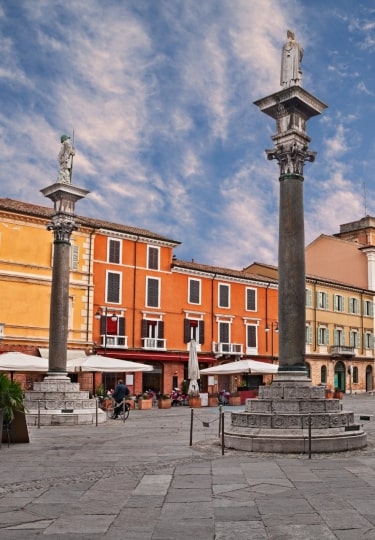The best things to do in Ravenna revolve around this city’s immense cultural heritage. Offering no fewer than eight UNESCO-protected sites in its relatively small urban footprint, Ravenna supplies a short and satisfying dive into the Early Christian and later Middle Ages.
But this former capital of the Western Roman Empire is about more than just startling mosaic ceilings and luminous frescoes. It’s also a good walking city, with street corner cafés to alight upon, and grand squares to explore.
Ravenna, based in the region of Emilia-Romagna, is also close to the pine-shaded beaches and glassy breakers of the Adriatic Sea, should you wish to cool off by the seaside.
Marvel at the Mausoleum of Galla Placidia
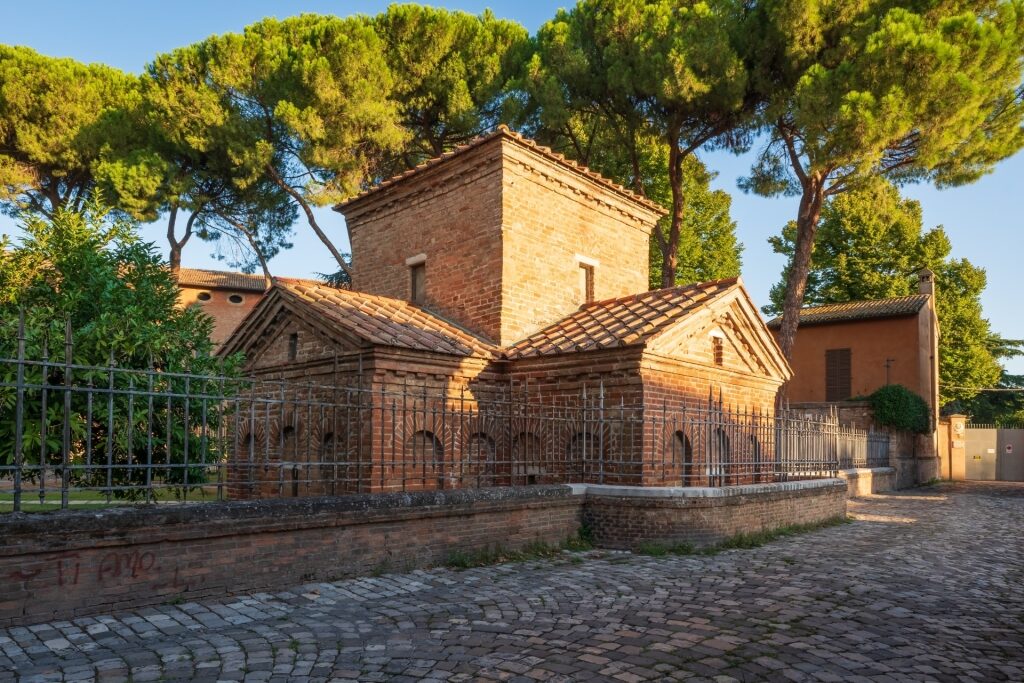
Mausoleum of Galla Placidia
From the outside, the Mausoleum of Galla Placidia doesn’t give much away.
Built on the grounds of the Basilica of San Vitale sometime between 425 and 450 AD, the mausoleum is a cruciform brick building with few windows. Intended as the Empress Galla Placidia’s final resting place, its purpose was never fulfilled after her remains stayed in Rome where she died.
Today, it stands instead as a monument to the artistry of Roman craftsmen. Your eyes quickly adjust from the sunshine to a night sky of brilliant stars depicted in mosaics across the ceiling. For UNESCO, the interior of this unassuming building is the finest surviving example of its kind in Europe.
Hallucinate in the Neonian Baptistery
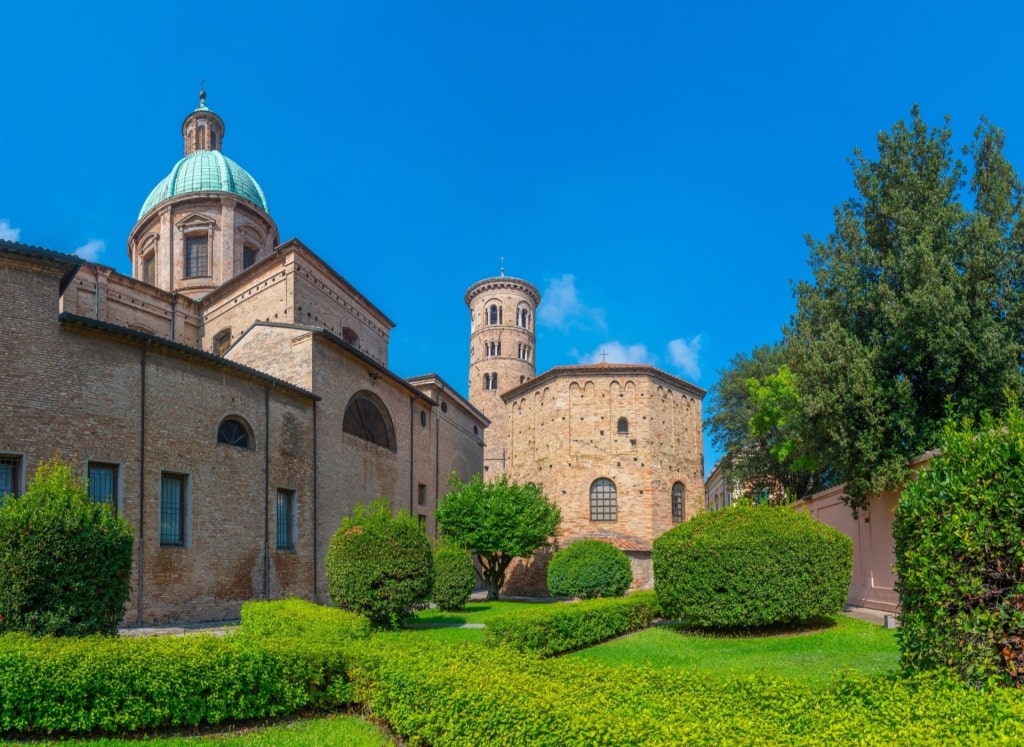
Neonian Baptistery
Another of the small and perfectly formed religious buildings that Ravenna is known for, the Neonian Baptistery, or “Battistero Neoniano”, is located near Ravenna Cathedral.
When psychoanalyst Carl Jung visited the baptistery, he described the interior of this 5th-century structure as a “hallucination”. Step inside this octagonal brick structure to experience it for yourself, allowing your eyes to roam across the marble and stucco layers until they reach the mosaics at the top.
The imagery within is striking. There’s the Day of Resurrection, the seven days of the week, and, framed in the dome’s apex, Jesus’ baptism with an unexpected cameo from Zeus.
Meet Theodoric the Great at the Basilica
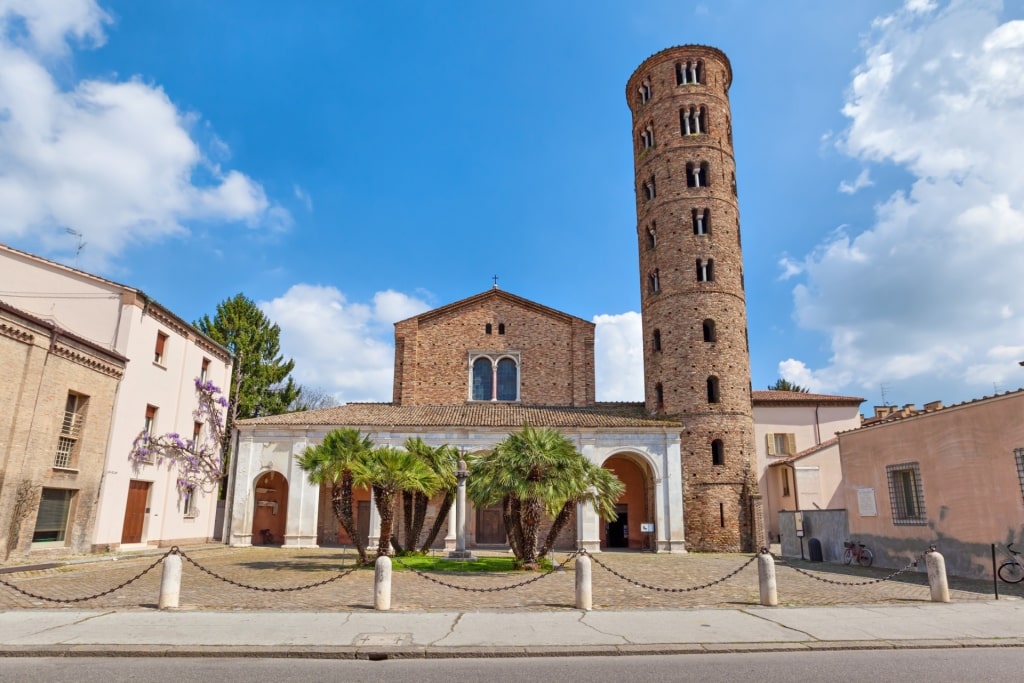
Basilica di Sant’Apollinare Nuovo
A visit to the Basilica di Sant’Apollinare Nuovo is one of the best things to do in Ravenna. Not only is it an ancient, spectacularly decorated church, but also—like all of Ravenna’s UNESCO circuits—it offers insight into the city’s epic history.
This church was first built by King Theodoric the Great to be his palace chapel. While his reign lasted for only 15 years, during that period he controlled a swathe of Europe that stretched from the Atlantic coast of modern-day Portugal to deep into the Balkans.
The church changed from Arian to Catholic as control of Ravenna fell to the Byzantine Empire. Entering beneath its loggia, you’ll find what’s been described as one of the most famous mosaic cycles of the Late Antique era. It’s one of only two churches in the world that retain their nave wall decorations.
According to some, King Theodoric is also depicted, and you can visit his mausoleum about a 20-minute walk north of the basilica, just across the train tracks.
Put the Pieces Together at the National Museum of Ravenna
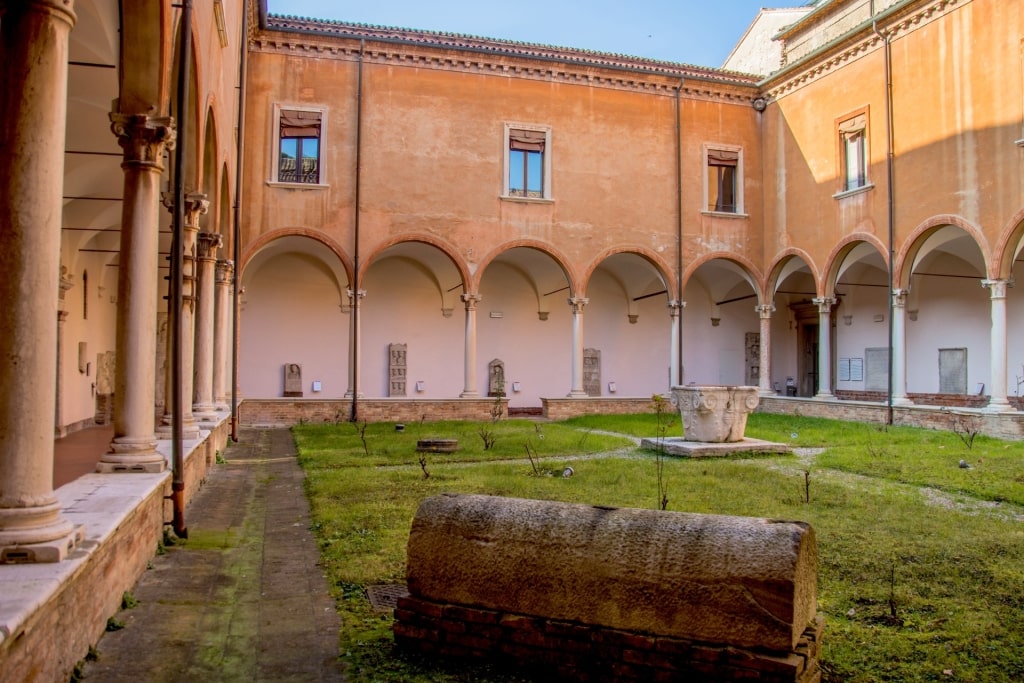
National Museum of Ravenna
One of the most serene museums you’re ever likely to enter, the National Museum of Ravenna is housed within a former Benedictine monastery.
Its collections act as an essential partner to the city’s UNESCO sites, shedding more light on the historical context of each building. With its collections organized into “cloisters”, you’ll see artifacts such as sarcophagi dating back to 1 AD, panels of mosaic flooring, and columns that date back to the reign of King Theodoric.
Visits usually conclude in what was once the monastery’s refectory, now the exhibition space for the fresco cycle by Pietro da Rimini, taken from the Church of Santa Chiara.
Visit Dante’s Tomb
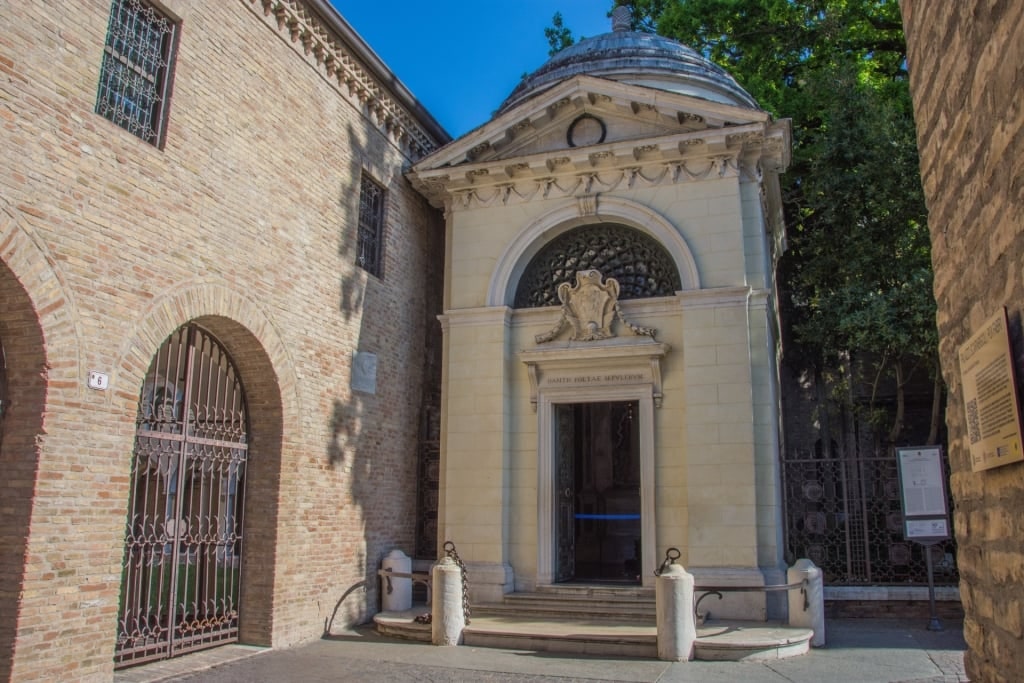
Dante’s Tomb
Down an unassuming sidestreet, and midway between the Neonian Baptistery and the Basilica of Sant’Apollinare Nuovo, is the tomb of one of the greatest poets of Italy.
Dante Alighieri—usually known, in the style of Brazilian soccer players, simply as “Dante”—died in Ravenna in 1321. While he was a Florentine by birth, the poet had been exiled from his home city for having put too many powerful noses out of joint with his writing.
Although a memorial was constructed in Florence for Dante, and Pope Leo X ordered the return of Dante’s remains to the Tuscan capital, the Franciscan monks in Ravenna failed to obey. As such, the poet continues to reside in the 18th-century tomb built for him in Ravenna.
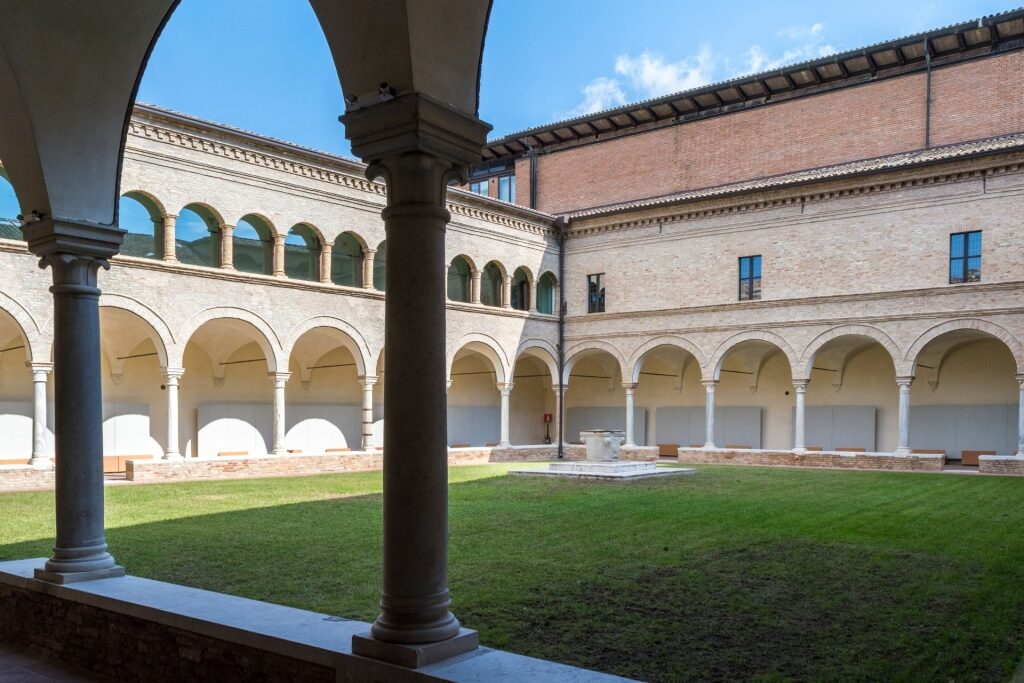
Dante Museum
Curious to learn more about this Italian icon? Walk to nearby Museo Dante. Located on the first floor of what used to be a Franciscan convent, the museum focuses on his masterpiece, The Divine Comedy. Across its eight rooms, you’ll also encounter multimedia exhibits detailing his life and times.
Discover the Steely Side of La Serenissima
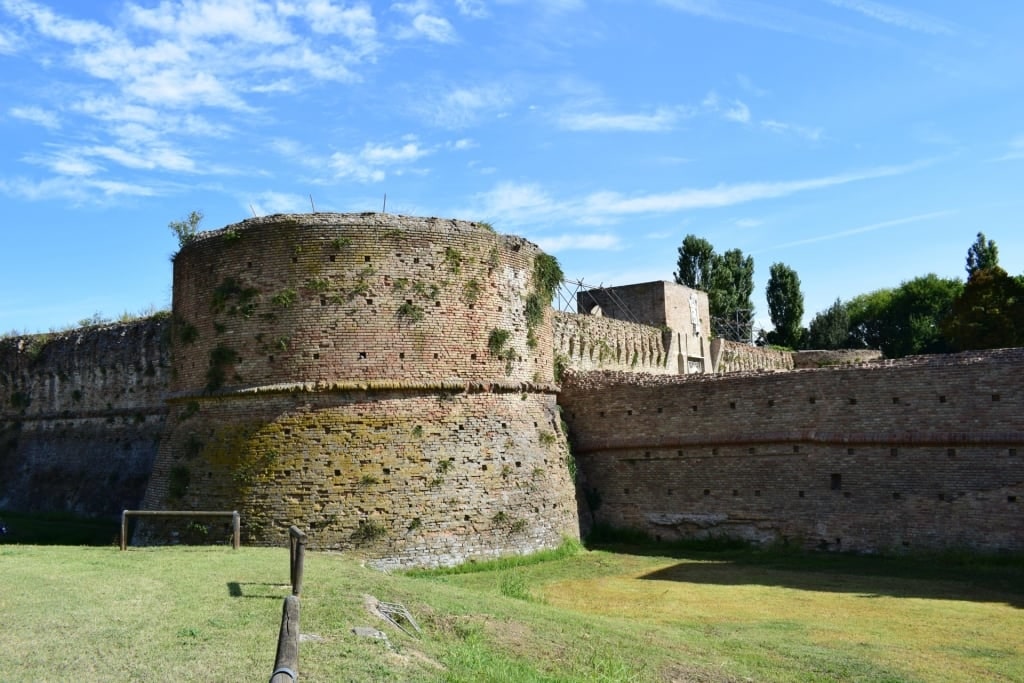
Rocca Brancaleone Fortress
For many, Venice is the romantic ideal as an urban plan. However, when you visit the Rocca Brancaleone Fortress in Ravenna, you’ll encounter a distinctly more pragmatic face of this once-great maritime republic.
Venice ruled Ravenna from the mid-15th century. To protect his new acquisition, the Doge Francesco Foscari constructed Rocca Brancaleone to help secure the defensive walls in the city’s northeast corner.
Today, the weathered embrace of the fortress walls has been converted into the equivalent of a walled garden for the citizens of Ravenna. This public park is one of the most tranquil spaces in the romantic city of Ravenna, a picnic spot and sometimes events space, with a café offering rich and delicious espresso.
Admire Klimt in Ravenna’s Art Museum
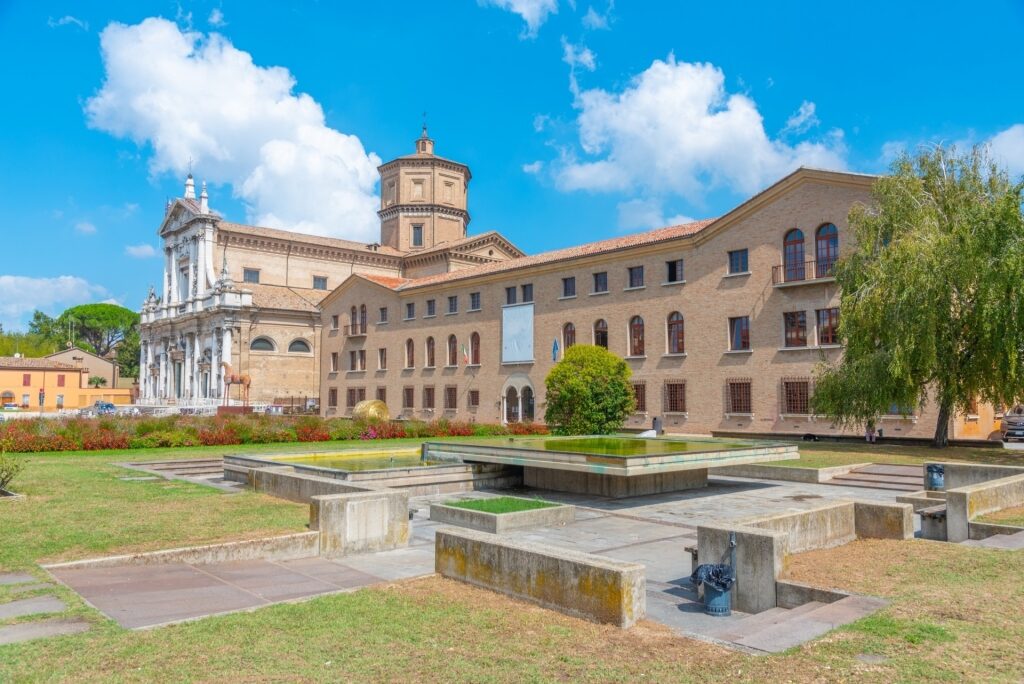
Ravenna Art Museum
This beautiful Italian city is fortunate to be overendowed with grand historic buildings to convert into cultural spaces. The Ravenna Art Museum, or MAR for short, is another of these; an impressive collection housed within a 16th-century monastery called the Loggetta Lombardesca.
Within its groomed grounds and shady colonnades, you’ll find several permanent exhibitions comprising over 300 paintings. The artwork includes masterpieces from the Renaissance up to important Italian pop art figures from the 20th century. Headline names include Gustav Klimt, Giorgio Vasari, and Banksy.
There’s also a Contemporary Mosaics collection, one of the few in Italy, where you can compare modern styles to those adorning the Mausoleum of Galla Placidia.
See Jesus’ Baptism at the Arian Baptistery
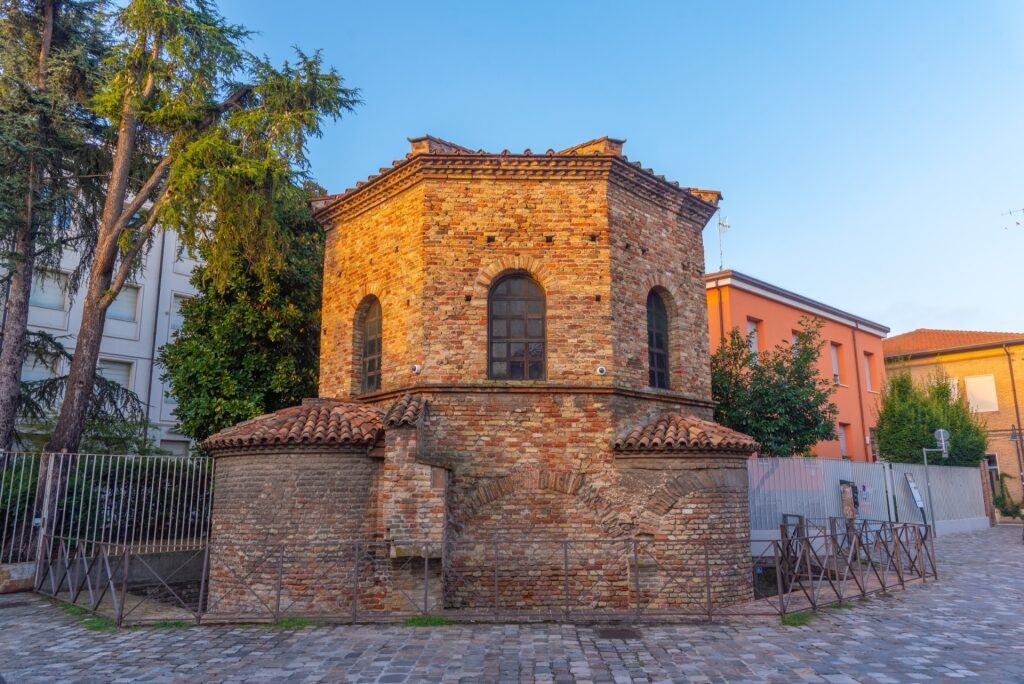
Arian Baptistery
A visit to the Arian Baptistery is one of the best things to do in Ravenna if you love buildings that feel profoundly ancient.
One of Ravenna’s UNESCO-listed early Christian buildings, this fifth-century octagonal structure is found close to the Arian cathedral of Santo Spirito. Constructed by King Theodoric the Great, it’s adorned with mosaics. The central artistic focus is the detailed mosaic image of the baptism of Jesus.
See the Hidden Treasures of the House of Stone Carpets
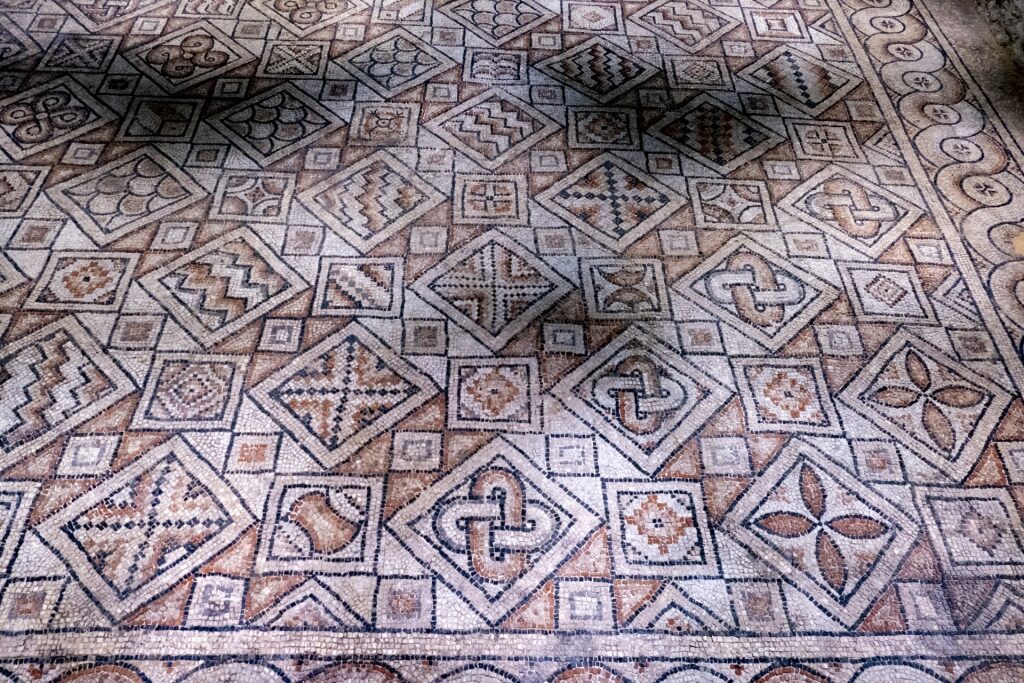
House of Stone Carpets
Only rediscovered in the early 1990s, the House of Stone Carpets, as this extraordinary archaeological site has been dubbed, is found beneath the Church of Sant’Eufemia.
For anyone who has visited the remains of a Roman villa—or even explored a major site like Herculaneum near Naples—the well-preserved mosaics found in the House of Stone Carpets are astounding in their abundance.
Over 4,300 square feet of polychrome designs, once the dazzling floor of a building complex from Late Antiquity, have been exposed. On a raised walkway, you’ll also see a still-paved Roman road passing through the building’s footprint.
Explore the Grandeur of Palazzo Rasponi dalle Teste
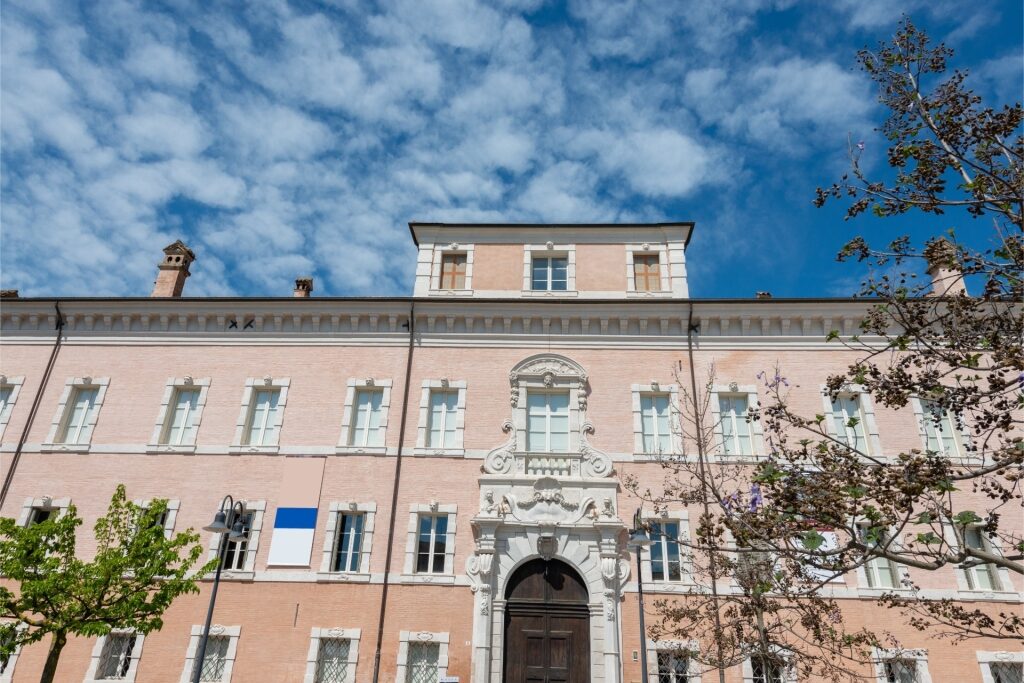
Palazzo Rasponi dalle Teste
Stepping inside the Palazzo Rasponi dalle Teste is one of the best things to do in Ravenna to help you avoid early Christian mosaic fatigue.
Built by the Rasponis, one of Ravenna’s most powerful families for almost three centuries, the palace’s facade resembles a grand wedding cake. It’s pink, with creamy Istrian stone framing its 43 windows, leaving you in no doubt what to expect as you enter beneath the stone lion’s paws symbolizing the Raponi family.
Having suffered damage during World War II, the palace in 2011 underwent a three-year renovation. Today, it’s used for concerts, cultural happenings, and as very upmarket municipal offices.
Go Mosaic Shopping in the Historic Center
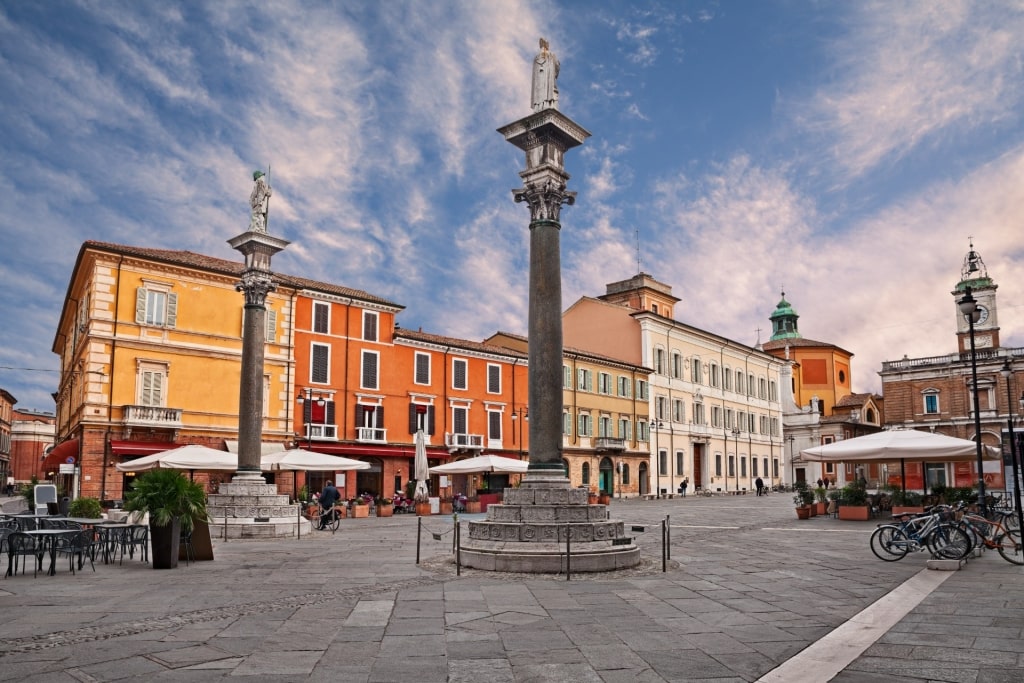
Piazza del Popolo
With much of Ravenna’s central district now pedestrianized, it’s a pleasant place to walk, browse, and relax.
The narrow streets leading from Piazza del Popolo, the city’s 13th-century power center, are filled with the smell of leather goods from the boutiques and the occasional burr of machinery from cubby hole workshops. Some of the best shopping streets are via Cavour, via Cairoli, and via Corrado, although that list isn’t exhaustive.
For a truly Ravennese souvenir, you can purchase a piece of art made by local mosaicists. Or take a tour of their workshop and design your own.
Catch an Opera in the Alighieri Theater
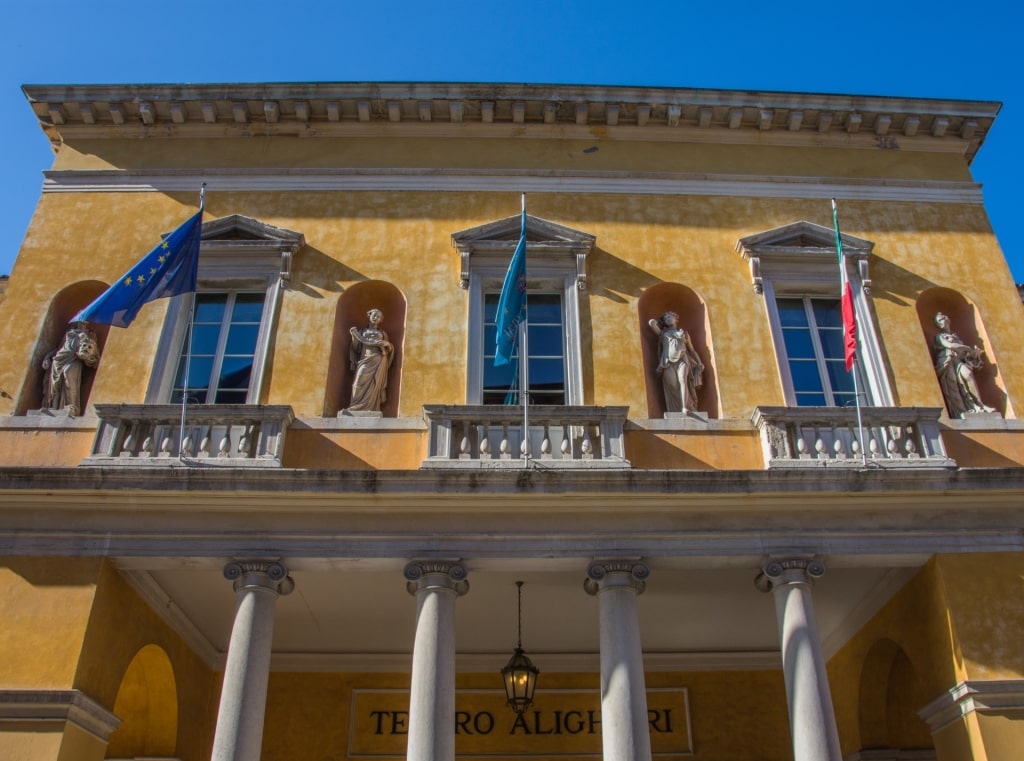
Alighieri Theater
This beautiful neoclassical theater is one of the homes of culture for Ravenna. And while the statues of the four muses pose in their alcoves above the entrance, the true muse of this theater is the poet Dante, for whom it is named.
Between November and April, the Alighieri Theater hosts numerous operas, although you’ll also find ballet, readings, and the occasional rock concert here. Settling into one of the red velvet seats as the orchestra strikes up is one of the best things to do in Ravenna.
Wade into the Adriatic on a Beach Day
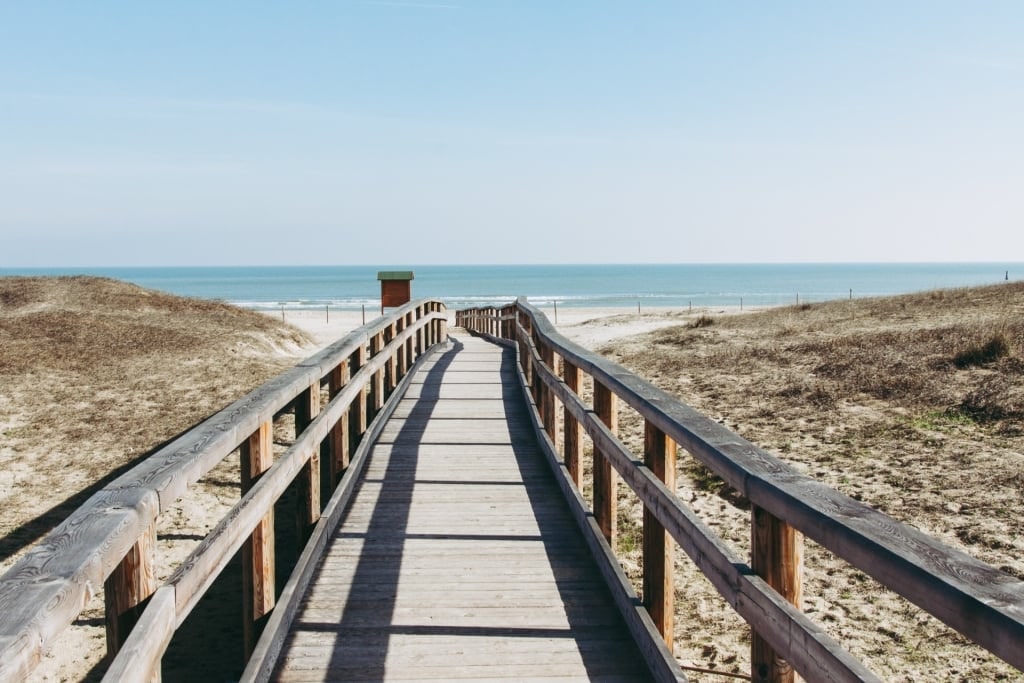
Marina di Ravenna
With five Italian beaches under a 25-minute drive from central Ravenna, a vacation centered on culture can swiftly switch to a toes-in-the-sand, chilled bottle of rosé kind of scenario.
Travel north to Casalborsetti to find one of the region’s most popular beaches. Once a quiet fishing village close to some serious sandy real estate, its ribbon of golden sand is now a place of sunbeds, caravan parks, and gelato purveyors.
The closest beach option is also the area’s oldest seaside resort, Marina di Ravenna. Ensconced amid pines and backed by dunes, this ribbon of golden sand is a popular staycation destination. You’ll find all manner of watersports available here, beach discos at sunset, and deeply competitive racchettoni or beach tennis, Ravenna’s unofficial sport.
Take a Foodie Day Trip to Bologna
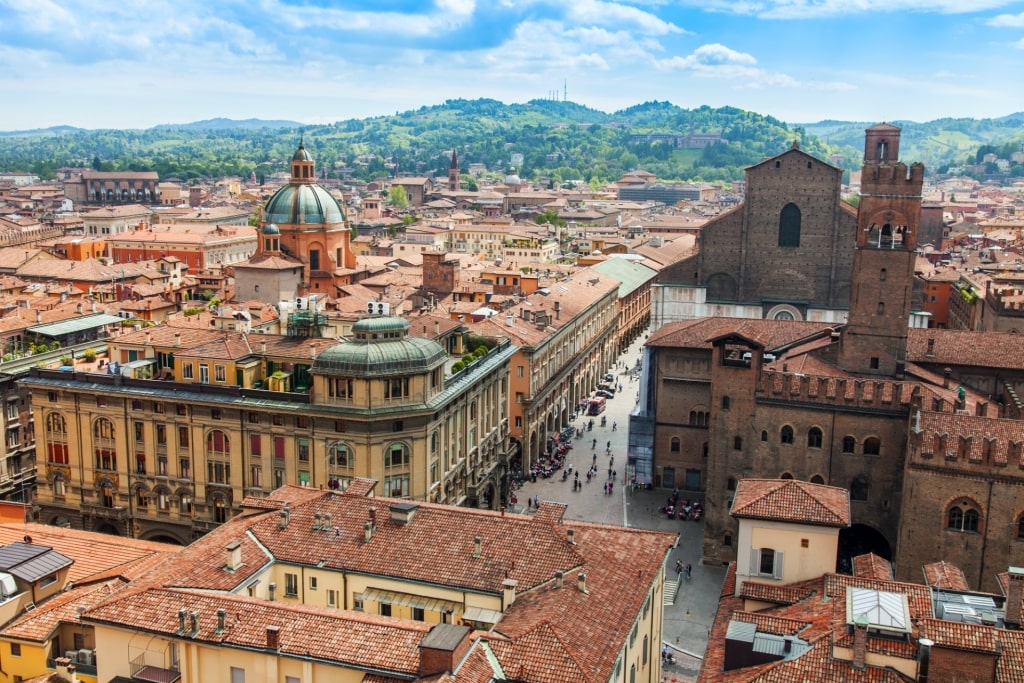
Bologna
If you’re done exploring Italy off the beaten path, an hour’s drive inland from Ravenna takes you to Bologna, widely considered as the country’s capital of cuisine.
How it’s earned this grand title is partly to do with its geographical location. The Italian region of Emilia-Romagna is one of the country’s agricultural heartlands. As you drive away from the sea breezes and pine forest close to Ravenna you’ll enter flat, fertile farming territory.
From this promising terrain, outstanding produce flows into the kitchens of revered restaurants such as Trattoria dal Biassanot, found close to Bologna’s city center. Here you can try its legendary lasagna verdi—layers of silken pasta coated in creamy bechamel and umami-rich ragu.
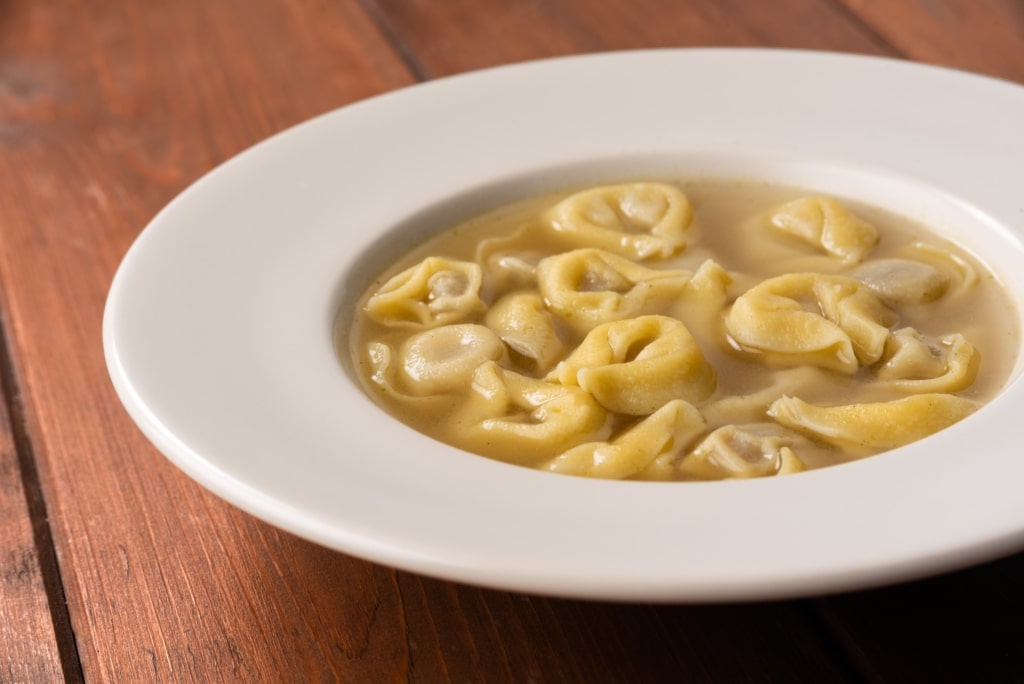
Tortellini in brodo
Or plump for tortellini in brodo, pasta parcels filled with mortadella and Parmigiano Reggiano, two totemic local products in one mouth watering morsel, that float in a rich, meaty broth.
But there’s only so much room for Italian food in your stomach, so, fortunately, the brick-hued historic center is a delight to explore. Walk its colonnades and hike up its towers, hopeful for the return of gnawing hunger so you can taste test the tagliatelle.
Discover Fellini in Rimini
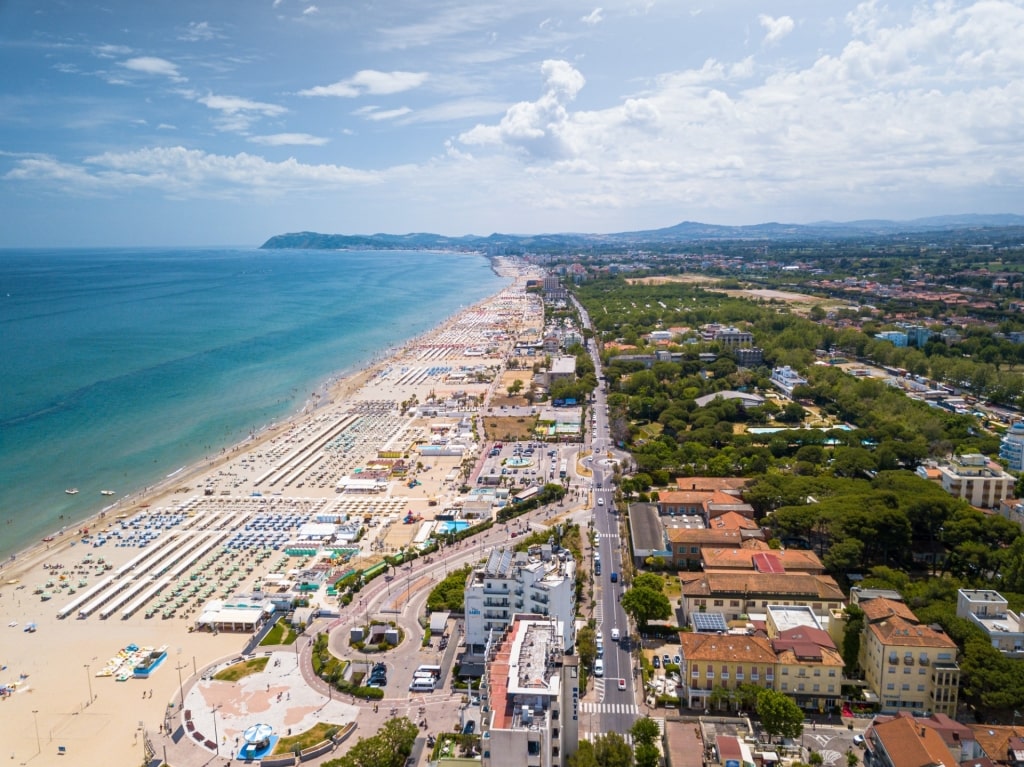
Rimini
Just under an hour’s drive south of Ravenna is the seaside resort town of Rimini. While many come for its vibrant nightlife, belle epoque hotels, and Adriatic-washed sands, Rimini distinguishes itself from other seaside resorts by being the birthplace of the film director, Federico Fellini.
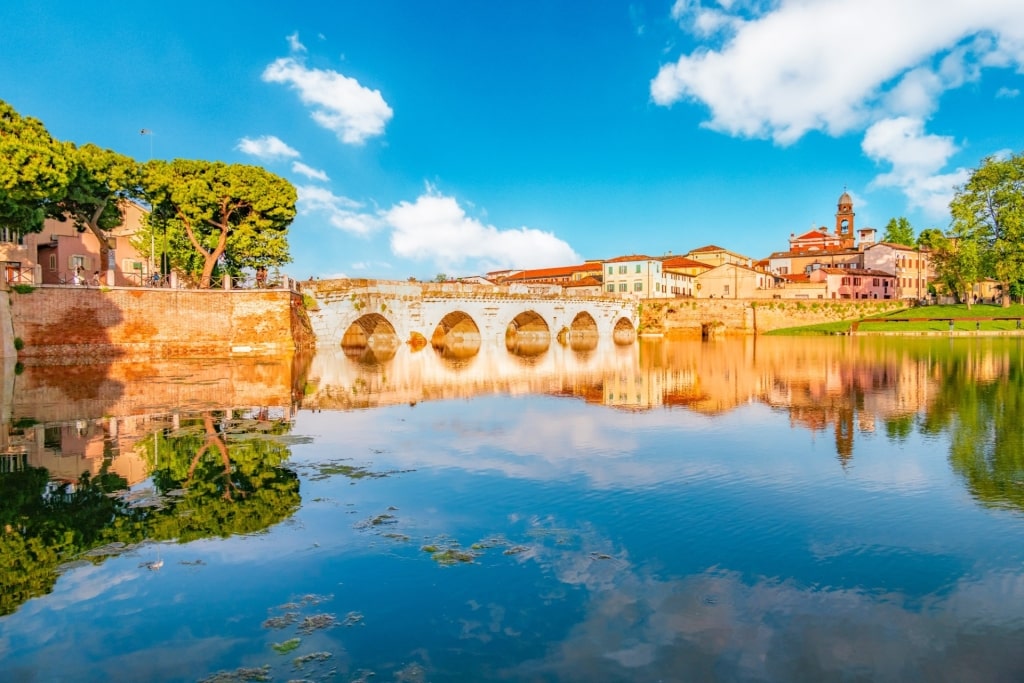
Tiberius Bridge, Rimini
Throughout the town, you can find references to Fellini’s movies. Borgo San Giuliano, a fishing village connected to Rimini by the ancient Tiberius Bridge, is daubed with pastel murals referencing Fellini’s oeuvre.
The recently opened Fellini Museum is a triple bill spread across Sismondo Castle, Fulgor Palace, and Malatesta Square. Once you’ve explored the playful exhibits, head to the glorious Cinema Fulgor to catch a movie—the iconic theater where Fellini was inspired as a child to become a director.
Read: Best Places to Visit in Italy for the First Time
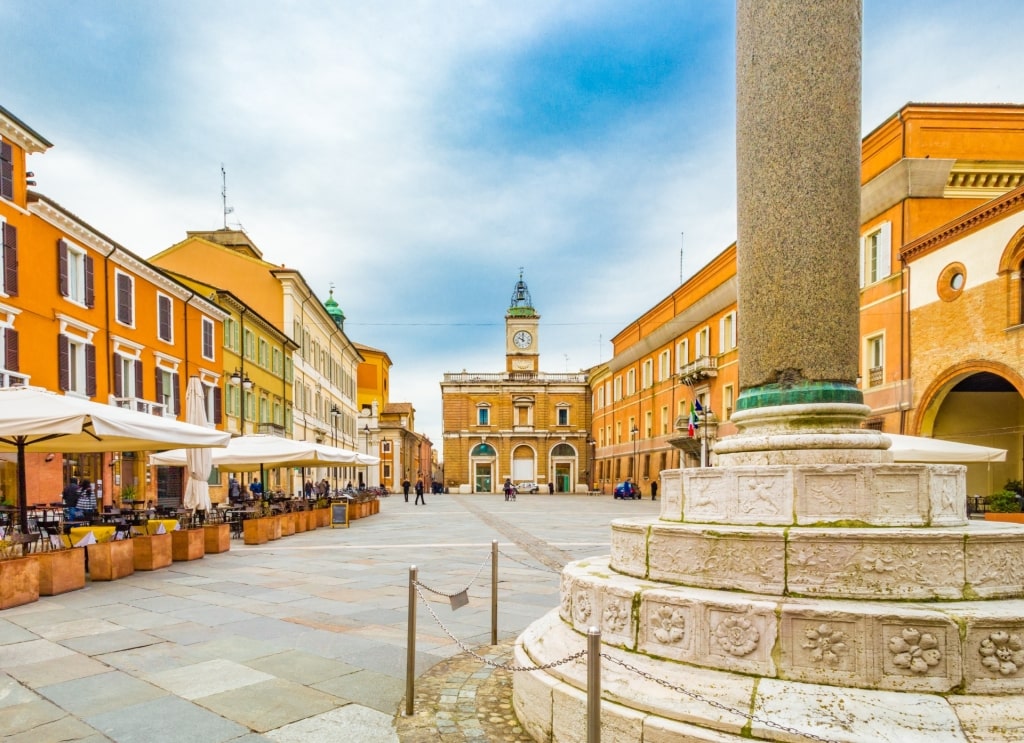
Piazza del Popolo
Browse our Ravenna cruises and book an Italian vacation that’ll burn as brightly in the memory as the mosaics of the Mausoleum of Galla Placidia.
